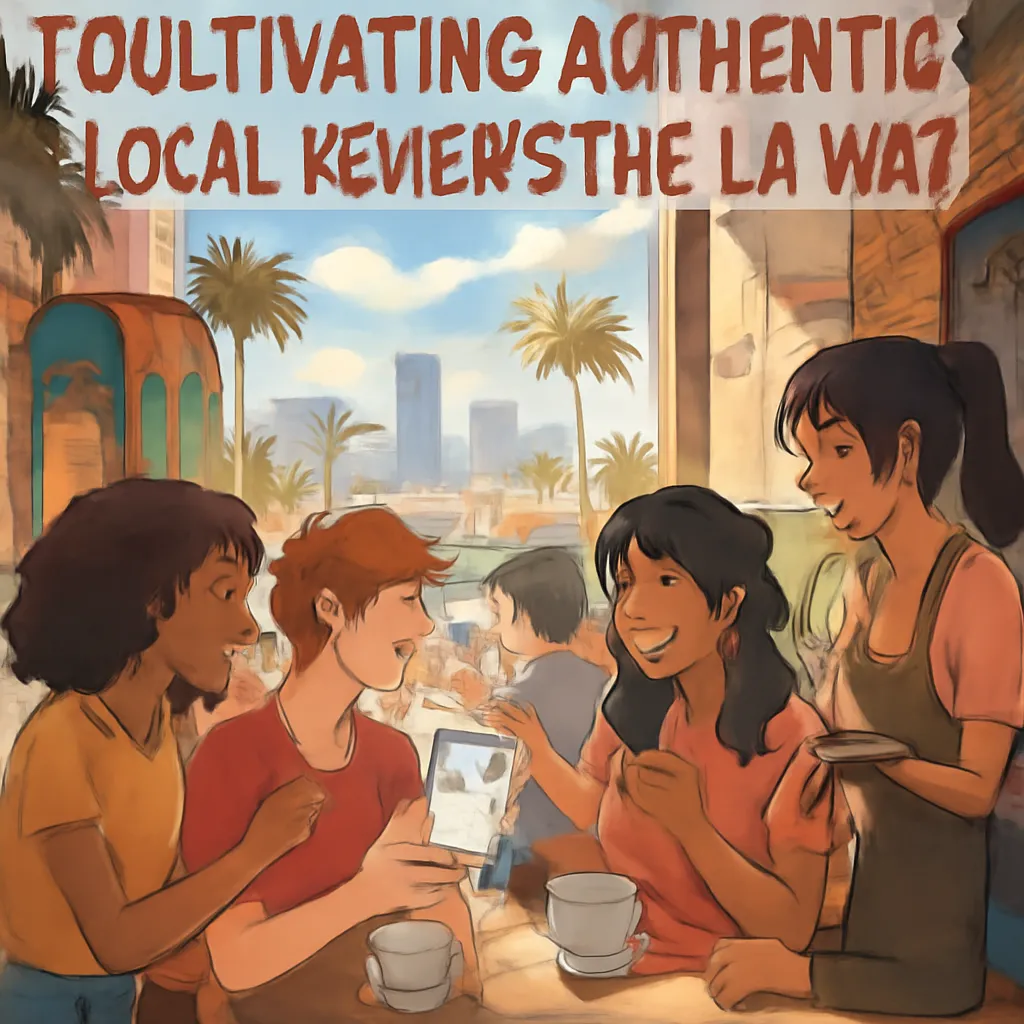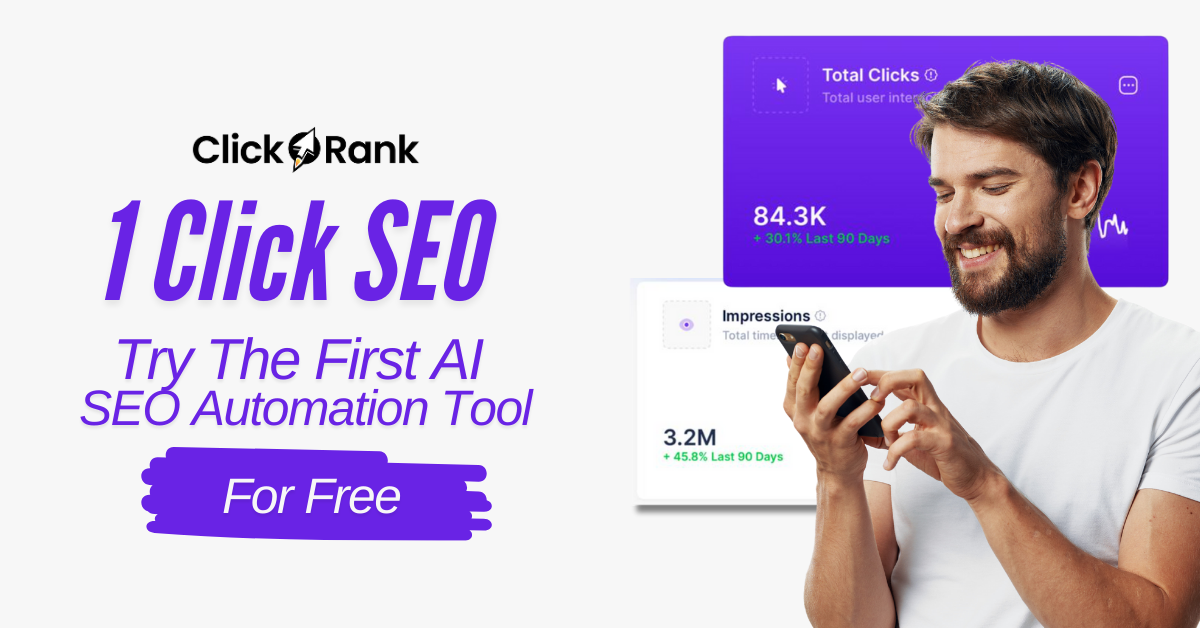Let’s get one thing straight: you can’t out-spend the industry giants in L.A., but you absolutely can outsmart them. Years back, my little taco joint in Silver Lake nearly vanished from search—until I stumbled across a few unorthodox moves even ‘SEO experts’ never talked about. Today, I’m handing you those GPS secrets, with a twist or two, so you can break into the Google Maps top 3—no celebrity endorsement required!
Noisy Neighbors & The Category Game: Playing Smart in a Crowded Market
When you’re hustling for a spot in the Los Angeles local map pack, your biggest threat isn’t always the business you think it is. In neighborhoods like Silver Lake or Venice, the “noisy neighbors” on Google Maps aren’t just the coffee shop across the street—they’re any business competing for the same Google Business Profile category. If you want to win at business profile optimization and dominate local map pack rankings, it’s time to play the category game smarter than your competition.
Who Are Your Real Competitors in Los Angeles?
It’s easy to assume your direct competitors are the businesses you see on your block. But on Google Maps, your rivals are anyone sharing your primary category—no matter their exact address. For example, if you’re a “Restaurant” in Venice, you’re battling every other “Restaurant” in the area, from sushi bars to burger joints. The map pack doesn’t care about your cuisine; it cares about your category.
That’s why local specificity is your secret weapon. The more specific your category, the fewer competitors you face—and the more likely you are to catch the eye of customers searching for exactly what you offer.
Fine-Tuning Categories: The Fastest Way to Leapfrog the Big Names
Here’s where most businesses in Los Angeles get it wrong: they set their primary category once and forget about it. But Google updates its list of business categories constantly. If you’re not revisiting your categories at least quarterly, you’re leaving visibility (and revenue) on the table.
- Primary Category: This is your main ranking signal. Get as specific as possible. Instead of “Restaurant,” try “Mexican Restaurant” or “Vegan Restaurant.”
- Secondary Categories: These help you show up for related searches. Add options like “Taco Restaurant,” “Vegetarian Restaurant,” or “Brunch Restaurant” if they fit your business.
Remember: “It’s not the best business that wins; it’s the best-categorized one.” – Joy Hawkins
Real-Life Win: The Power of a Simple Category Swap
Let’s get practical. When I switched a client’s profile from the generic “Restaurant” to “Mexican Restaurant,” their map pack visibility and traffic doubled within weeks. Why? Because the competition for “Mexican Restaurant” was smaller and more targeted. Suddenly, they weren’t lost in a sea of every eatery in L.A.—they were front and center for people craving tacos and enchiladas.
This isn’t just theory. It’s a proven Google Business Profile tip that can put you ahead of even the most established names in your niche.
Bonus Move: The Wild Card of Ultra-Niche Categories
If you really want to outsmart the local SEO crowd, dig into Google’s lesser-known categories. Did you know you can list your business as a “Vegan Tacos” restaurant? Or a “Gluten-Free Bakery”? These ultra-niche categories have way less competition and attract highly qualified local traffic—people who know exactly what they want.
- Check Google’s current category list (it changes often!)
- Test adding a hyper-specific category as your secondary or even primary if it fits
- Monitor your insights for a spike in relevant searches and calls
In a city as diverse as Los Angeles, specificity isn’t just smart—it’s essential. The more you tailor your business profile optimization to what makes you unique, the more you’ll stand out in the crowded local map pack.
Quarterly Check-In: Stay Ahead of the Game
Don’t set and forget your categories. Google’s list evolves, and so do your competitors. Schedule a quarterly review of your Google Business Profile categories. Look for new, relevant options that might give you an edge. Even a small tweak can mean the difference between being invisible and being the top result for Los Angeles local SEO searches.
It’s not the best business that wins; it’s the best-categorized one.
– Joy Hawkins

Human Stories Over Stats: Cultivating Authentic, Local Reviews the LA Way
When it comes to Google Maps ranking and winning the local map pack in Los Angeles, numbers alone won’t get you to the top. It’s the human stories—the real, local experiences—that make your Google Business Profile stand out. In the city of endless neighborhoods and iconic moments, authentic reviews with a true LA flavor are the secret sauce for boosting your local search visibility and dominating SEO Los Angeles.
Forget Generic—Ask for Reviews That Scream “LA!”
Let’s face it: “Great service!” or “Nice place!” just doesn’t cut it in a city as vibrant as LA. Google’s algorithm—and your future customers—are searching for reviews that feel real, specific, and unmistakably local. Instead of asking for “a quick review,” encourage your customers to share the details that make their experience unique to Los Angeles. For example:
- “Tell us what you loved about your visit after the Dodgers game!”
- “Did you spot a celebrity while grabbing your coffee? Share your story!”
- “Which mural did you see on your walk to our shop in the Arts District?”
These kinds of prompts invite customers to paint a picture, not just leave a rating. As Mike Blumenthal says:
‘A review that paints a picture is worth a hundred that just give stars.’
Encouraging reviews with local flavor and narrative details not only resonates with Angelenos but also signals to Google that your business is deeply rooted in the community. This is a powerful Google Business Profile tip that can set you apart in the crowded LA market.
Respond Like a Local—No Templates Allowed
It’s not just about collecting reviews; it’s about showing you’re present and engaged. Whether it’s praise or a complaint, your responses should be as personal and local as the reviews themselves. Avoid canned replies. Instead, mention neighborhood landmarks, local events, or even the weather (“We’re glad you enjoyed our patio on that sunny Silver Lake afternoon!”). This approach does two things:
- It shows customers you’re a real part of the LA community, not just another business.
- It signals to Google that your business is active, responsive, and relevant to local searchers.
Google’s local algorithm rewards businesses that interact authentically and in real time. Personalized responses help boost your local search visibility and can even encourage more detailed, story-driven reviews from future customers.
Anecdote: The Burrito Review That Changed Everything
Here’s a real-world example of how one heartfelt review can transform your business. A small taco stand in East LA received a review that read:
“I stopped by after a late-night concert at The Greek, starving for something good. The owner whipped up the best carne asada burrito I’ve ever had—right as the neon lights flickered on. Midnight cravings = satisfied!”
That single review, full of local color and a relatable LA moment, quickly rose to the top of the business’s Google profile. Soon, more midnight snackers started showing up, referencing the review and sharing their own late-night stories. The result? A flood of new customers and a serious boost in Google Maps ranking.
Encourage Stories, Not Just Stars
In LA, quality beats quantity every time. A handful of detailed, story-rich reviews will do more for your SEO Los Angeles strategy than dozens of generic five-star ratings. Here’s how to encourage those stories:
- Ask open-ended questions in your review requests.
- Highlight reviews that mention local experiences on your social media.
- Thank reviewers by referencing their specific story in your reply.
Remember, genuine reviews with local flavor don’t just help you connect with Angelenos—they also help you climb the ranks in Google’s local map pack. When your profile is filled with real stories, both Google and your next customer will know you’re the real deal in LA.

Street-Level Tactics: Geotagging, Local Content & the Secret Sauce Most Miss
If you want to break into the top 3 of the Los Angeles local map pack, you can’t just set up your Google Business Profile and hope for the best. You need to show Google—and your customers—that you’re not just in LA, you’re of LA. The secret? Hyper-local, real-time content and clever geotagging. Let’s dive into the street-level tactics that most businesses overlook, but that can transform your maps optimization and business profile optimization game.
Imagine you’re posting a photo of your shop’s front window. Nice, but not enough. Now imagine snapping a shot of your team with the Santa Monica Pier in the background at sunset, or capturing the glistening streets after a rare rainy morning on Fairfax. When you upload these in-the-moment, geotagged photos to your Google Business Profile, you’re sending Google a powerful signal: you’re active, authentic, and deeply connected to your city. As local SEO expert Miriam Ellis puts it,
‘If Google can smell the smog on your posts, you’re doing local SEO right.’
Google’s algorithm is hungry for proof that you’re a real, relevant part of the LA scene. That’s why local SEO content that reflects what’s actually happening in the city—like referencing the Venice Beach drum circle in your post descriptions or mentioning the latest K-Town food festival—can give your business a serious edge. When you publish posts that tie your services or products to spontaneous local events or famous landmarks, you’re stacking trust signals that Google loves. It’s not just about keywords; it’s about context and community.
Here’s where most businesses miss out: they post generic updates or stock images that could be from anywhere. But Google’s local map pack is reserved for those who show, not just tell, their LA story. Geotagging your photos—making sure the image metadata includes your exact location—maxes out your local SEO signals. Every time you upload a photo of your team at Griffith Observatory or a customer enjoying your product at Echo Park Lake, you’re reinforcing your presence in the city’s digital landscape.
Don’t stop at photos. The best business profile optimization strategies include dynamic, interactive posts. Try running a mini scavenger hunt through your Google Posts, dropping clues that reference different LA neighborhoods. For example, challenge your followers to spot a mural in the Arts District or identify a hidden gem in Silver Lake. Not only does this encourage engagement (a key ranking factor), but it also keeps your profile fresh and hyper-local. Interactive content like this shows both Google and your audience that you’re invested in the community, not just operating within it.
Seasonal content is another underused maps optimization tactic. When you post about the Rose Parade in January or the LA County Fair in September, you’re tapping into what’s top-of-mind for locals and visitors alike. This kind of timely, city-specific content is a massive differentiator in a crowded market. It tells Google that your business is alive, responsive, and plugged into the pulse of Los Angeles.
The real secret sauce? Consistency and authenticity. Dynamic content that authentically reflects your business’s place in the LA scene can vault your profile to the local map pack’s prime positions. Don’t be afraid to get creative and have fun with your posts. The more you involve your community and showcase your unique LA story, the more likely you are to climb the ranks.
In conclusion, dominating the Los Angeles local map pack isn’t about gaming the system—it’s about embracing your city and letting that shine through every photo, post, and interaction. Geotag your images, reference real events and landmarks, and keep your content as fresh as the latest food truck trend. If you do, you won’t just optimize your Google Business Profile—you’ll become a true part of the LA digital landscape, right where your customers (and Google) are looking.
TL;DR: Focus on honest reviews, creative Category selections, and localized content to leap ahead of big-budget competitors on Google Maps in L.A. The ‘little guys’ who color outside the SEO lines are the ones showing up on top!
You may be interested

